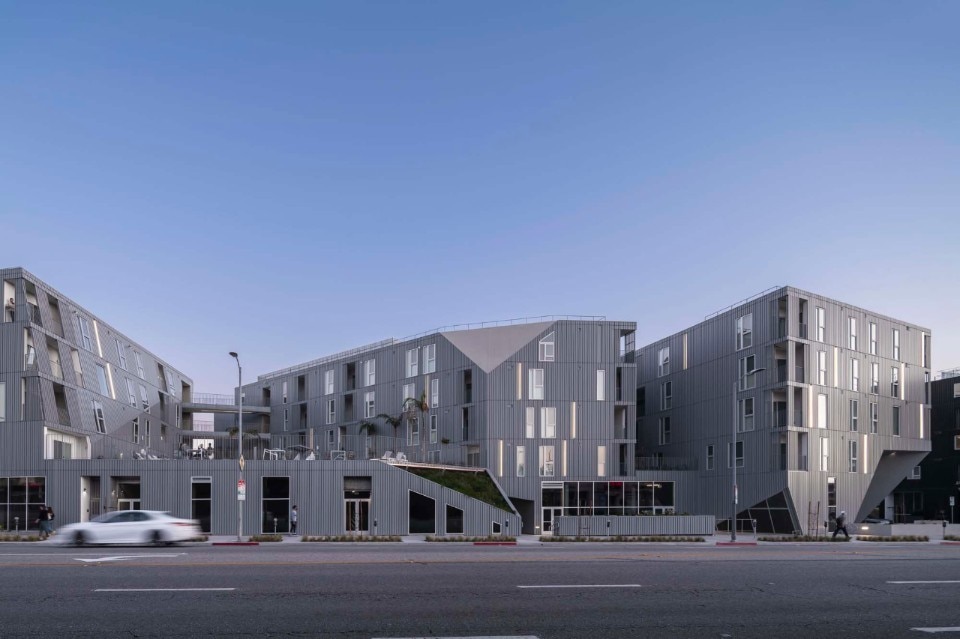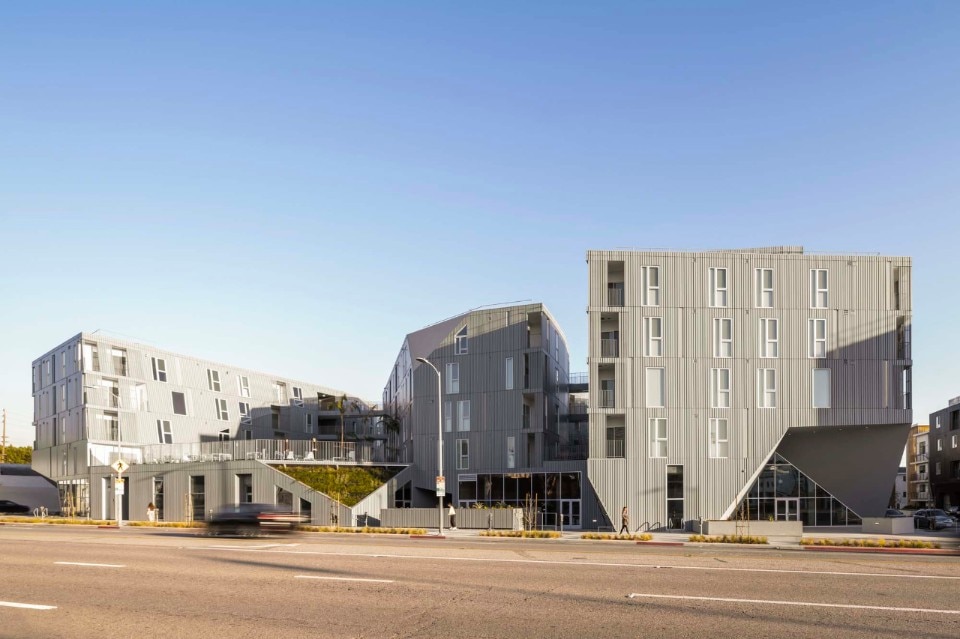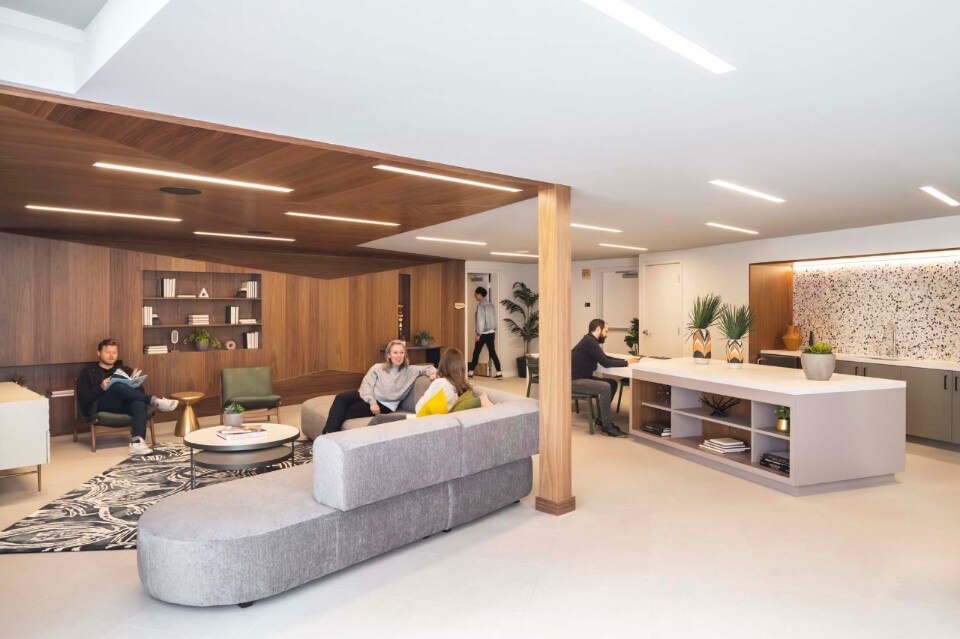The uncontrolled urban sprawl across the U.S. territory contrasting with the dense cities of the East Coast; the rectilinear roads – the “strips” investigated by Robert Venturi in “Learning from Las Vegas” – stretching across a wasteland of billboards, shopping malls and fast food restaurants, where the design of “city” is sacrificed to the massed logics of consumption and fast circulation. In these contexts, marking much of the North American landscape, housing generally falls into two types: a scattered proliferation of single-family houses, and highly concentrated collective agglomerations.
An intermediate dimension in terms of scale and residential density is almost missing.
This is the case with Santa Monica Boulevard, the last stretch of Route 66 in the Pacific Coast, where the Californian studio LOHA has realised a residential project that goes against the mainstream.
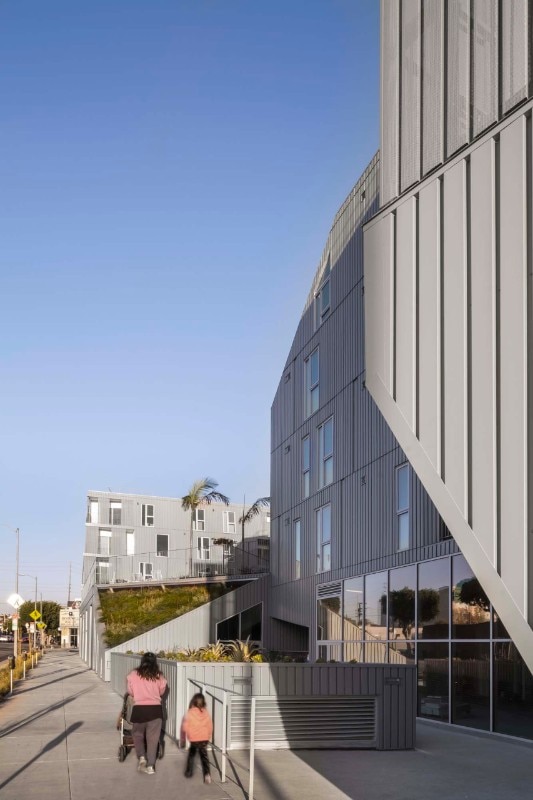
In an area undergoing transformation located between the high-speed road and the adjacent neighbourhood, amidst car dealerships, car parks and cheap shops, the studio has introduced the unusual “Missing Middle Housing” model, positioning halfway between current typologies: duplex and triplex housing, townhouses, courtyard buildings and cottages which, thanks to different aggregative possibilities, allow for a more diversified and affordable housing stock compared to the ordinary real estate market, with a special focus on the quality of public pedestrian space as a place for socialising.
In this case the complex, located at 1500 South Granville Avenue, is characterised by three irregular volumes connected by common green spaces. The ground floor houses shops, restaurants, and community spaces; the four upper floors contain 153 affordable housing units for UCLA students and staff.
The massive volume of the buildings, clad in metal, is broken up by a lively dialectic between solids and voids. A sequence of cutouts in the shape of inverted prisms erodes the corners of the complex, favouring the widening of the pavement and reducing the impact of the construction on the street.
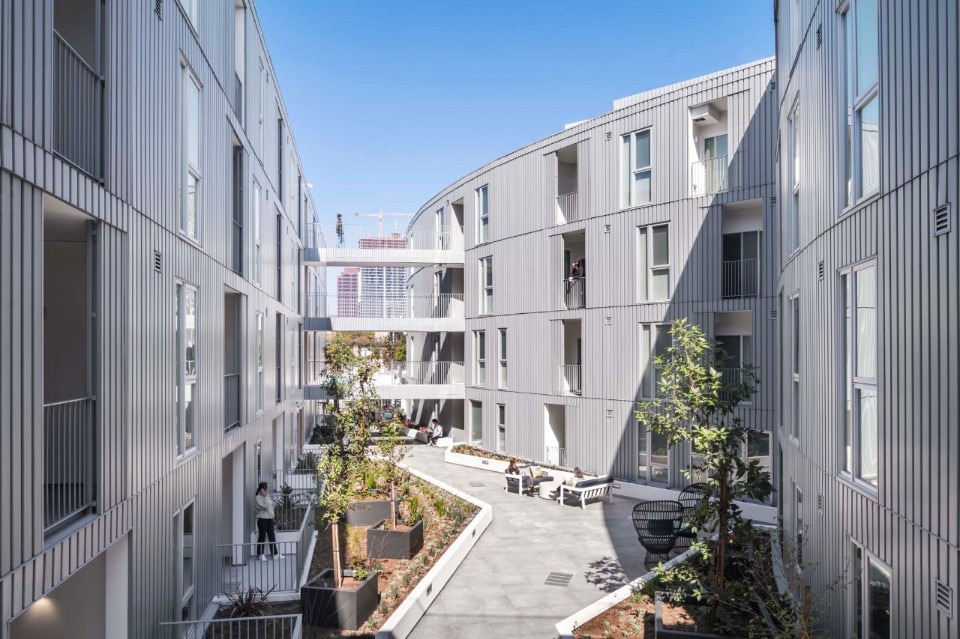
The presence of large open-air spaces branching off between the buildings, with seating, a swimming pool, and native vegetation, mitigates the density of the built-up area, favouring the genesis of pleasant spots for resting and socialising, as in a domestic courtyard. The study of overlooks, natural light, and cross-ventilation flows, together with the use of solar panels and rainwater recovery systems favour microclimatic wellbeing, reducing operating costs and environmental impact.
The intervention amis at standing as a milestone in a process of “humanisation” of the Los Angeles suburban areas, in their transition from car-dominated “non-places” to inclusive and socialising venues, where it is possible to forge an identity of place and a sense of community through slowness of fruition and proximity relations.
- Project team:
- Lorcan O'Herlihy (Principal-in-Charge), Judson Buttner (Project Manager), Rosemary Jeremy
- Landscape architecture:
- LA Group Inc
- Civil and structural engineering:
- John Labib & Associates
- MEP:
- Design/Build
- Interior design:
- Ariel Fox Design
- Contractor:
- Suffolk Construction
- Client:
- CIM Group


